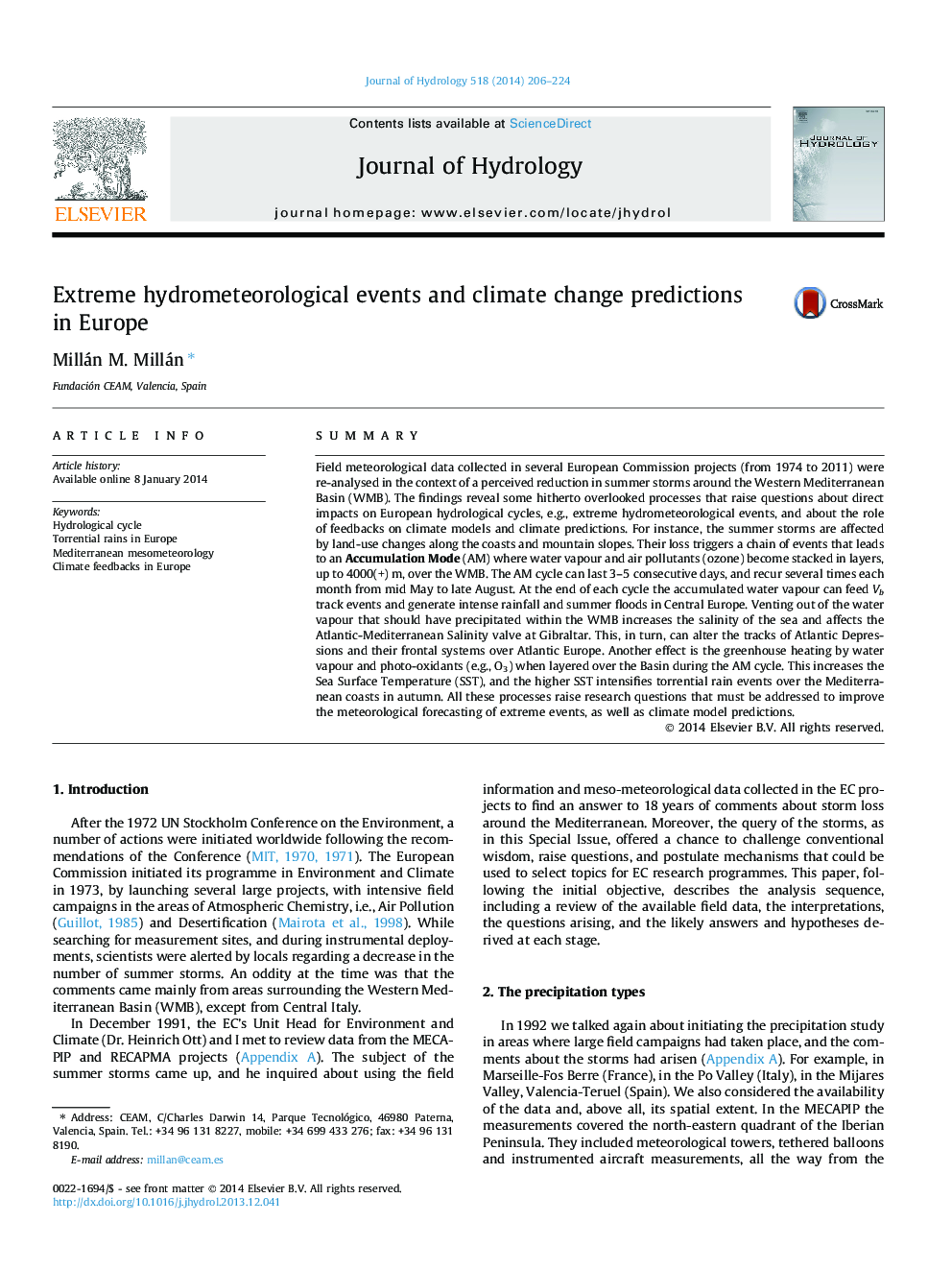| کد مقاله | کد نشریه | سال انتشار | مقاله انگلیسی | نسخه تمام متن |
|---|---|---|---|---|
| 4575985 | 1332902 | 2014 | 19 صفحه PDF | دانلود رایگان |
• Summer storms around the Mediterranean are affected by land-use changes.
• Their loss leads to an accumulation mode of water vapour over the Western Basin.
• Accumulated water vapour can feed Vb tracks and produce floods in Central Europe.
• Greenhouse heating of water vapour increases Mediterranean Sea Surface Temperature.
• Higher SST augments torrential rains on Mediterranean coasts and islands in autumn.
SummaryField meteorological data collected in several European Commission projects (from 1974 to 2011) were re-analysed in the context of a perceived reduction in summer storms around the Western Mediterranean Basin (WMB). The findings reveal some hitherto overlooked processes that raise questions about direct impacts on European hydrological cycles, e.g., extreme hydrometeorological events, and about the role of feedbacks on climate models and climate predictions. For instance, the summer storms are affected by land-use changes along the coasts and mountain slopes. Their loss triggers a chain of events that leads to an Accumulation Mode (AM) where water vapour and air pollutants (ozone) become stacked in layers, up to 4000(+) m, over the WMB. The AM cycle can last 3–5 consecutive days, and recur several times each month from mid May to late August. At the end of each cycle the accumulated water vapour can feed Vb track events and generate intense rainfall and summer floods in Central Europe. Venting out of the water vapour that should have precipitated within the WMB increases the salinity of the sea and affects the Atlantic-Mediterranean Salinity valve at Gibraltar. This, in turn, can alter the tracks of Atlantic Depressions and their frontal systems over Atlantic Europe. Another effect is the greenhouse heating by water vapour and photo-oxidants (e.g., O3) when layered over the Basin during the AM cycle. This increases the Sea Surface Temperature (SST), and the higher SST intensifies torrential rain events over the Mediterranean coasts in autumn. All these processes raise research questions that must be addressed to improve the meteorological forecasting of extreme events, as well as climate model predictions.
Journal: Journal of Hydrology - Volume 518, Part B, 10 October 2014, Pages 206–224
